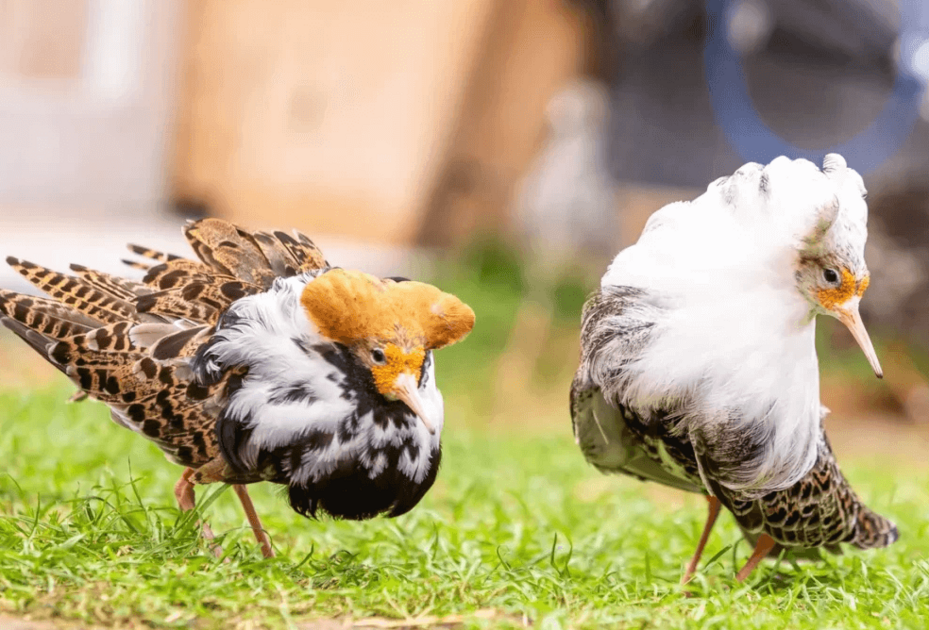- Home /
- University /
- Infoservice /
- Press Releases /
- Ruff: A single gene in the supergene controls male phenotypes
University
Ruff: A single gene in the supergene controls male phenotypes
The ruff (Calidris pugnax) is a migratory bird that breeds in marshes and wet meadows across northern Europe and Asia and winter in large flocks across the world. In ruffs, there are three male phenotypes – also called ‘morphs’ – that are genetically determined and differ in their sexual behaviour. The ‘independent’ males are territorial and perform courtship, the ‘satellites’ are not aggressive but participate in courtship’, whereas the ‘faeders’ look like females and attempt to sneak copulations whenever possible. An international study published in "Science" with the participation of the University of Veterinary Medicine Vienna has now discovered that a gene that regulates the metabolism of the main androgen, testosterone, is responsible for the differences between male phenotypes in this species of snipe.

Androgens are pleiotropic - i.e. they orchestrate several physiological processes - and play a central role in the development and modification of sexual phenotypes. In their study, the scientists have now been able to show that the differences in the circulating androgens of the three male mating morphs in ruffs are linked to the enzyme 17-beta-hydroxysteroid dehydrogenase 2 (HSD17B2), which is encoded by a gene within the supergene that determines the morphs.
A single gene leads to numerous variations
"A combination of evolutionary changes in the regulation, sequence and structure of a single gene leads to endocrine variations that underlie reproductive phenotypes," emphasises study co-author Leonida Fusani, head of the Konrad Lorenz Institute of Ethology (KLIVV) at the Vetmeduni. Overall, according to Fusani, the results indicate that a combination of changes in the regulation and the coding sequence of the HSD17B2 gene leads to increased testosterone conversion in the two non-aggressive morphs. Furthermore, the suppression of recombination caused by the supergene presumably accelerated the evolution of these two derived morphs.
Clear correlation: Expression of HSD17B2 and testosterone levels
Males with low testosterone levels had higher HSD17B2 expression in the blood and in brain areas associated with social behaviour and testosterone production than males with high testosterone levels. Derived HSD17B2 isoenzymes, which are absent in high testosterone males but preferentially expressed in low testosterone males, also converted testosterone to androstenedione - a steroid that is a weaker androgen than testosterone - faster than the original isoenzyme.
The article „A single gene orchestrates androgen variation underlying male mating morphs in ruffs“ by Jasmine L. Loveland, Leonida Fusani, Clemens Küpper et al. was published in „Science“.
Scientific article
Rückfragekontakt:
Univ.-Prof. Leonida Fusani, PhD
Konrad-Lorenz-Institut für Vergleichende Verhaltensforschung (KLIVV)
Veterinärmedizinische Universität Wien (Vetmeduni)
Leonida.Fusani@vetmeduni.ac.at